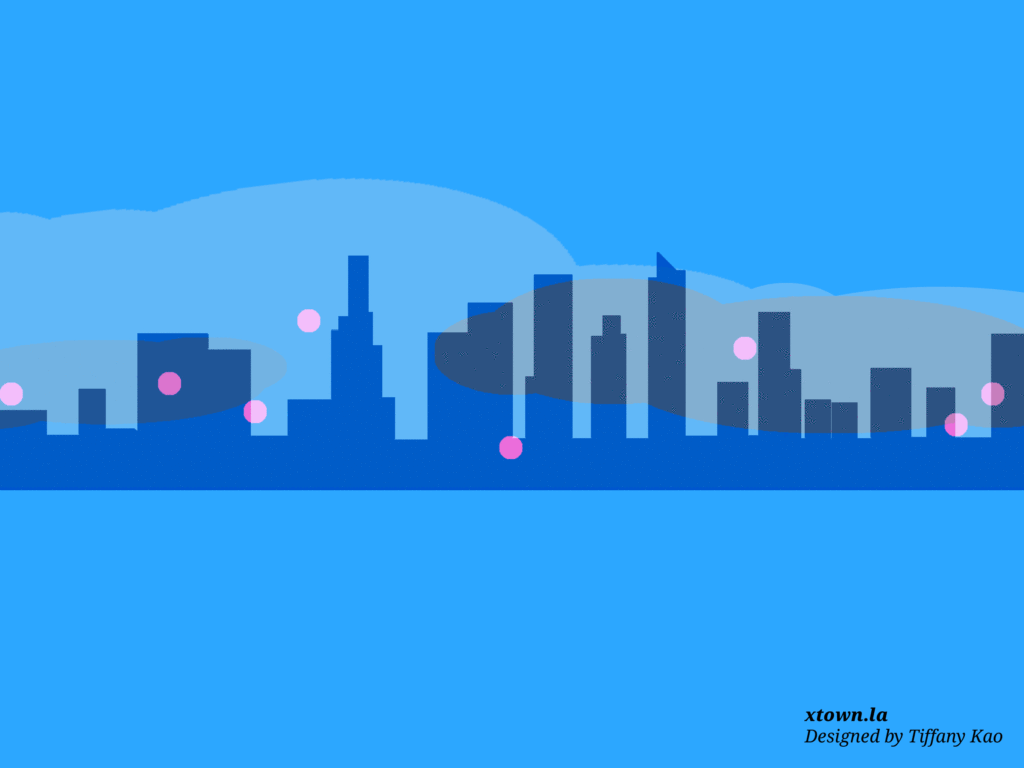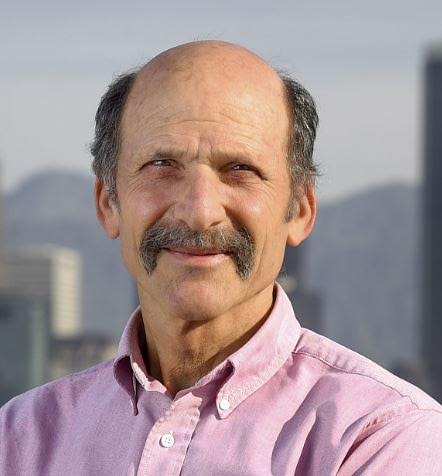Understanding air quality in Los Angeles

You know that feeling of inhaling a breath of clean, cool air? If you live in Los Angeles, you don’t always get that.
Air quality directly affects quality of life, and in the American Lung Association’s State of the Air report, released in April, Los Angeles scored an F on ozone and particle pollution, both of which can aggravate asthma and cause lung irritation. There are even more severe effects from air pollution, including lung cancer.
Crosstown will soon begin a deep dive into local air quality, using data to explore which neighborhoods have the cleanest, and the dirtiest, air. In advance of that, we spoke about air quality with Ed Avol, a professor and chief of the Environmental Health Division in the Department of Preventive Medicine at the University of Southern California.
This interview has been lightly edited for length and clarity.
Crosstown: What is AQI?
Ed Avol: AQI refers to the Air Quality Index, which is a U.S. EPA-created index for combining several common air pollutants into one value that can be shared with the public in a useful manner. Strictly speaking, the AQI combines the airborne concentrations of several of the key contaminants named in the Clean Air Act into one number, on a scale from 0 to 500, with recommended health-oriented comments as to risk and actions to take as a function of increasing value. To aid in understanding, a color-coded system is also a “shorthand” way to convey the message of the AQI.

Ed Avol.
Q: What is PM2.5?
A: PM2.5 refers to particulate matter. Think of these as little pieces of “dirt” floating in the air of a specific diameter: 2 ½ microns, on average, which is about 1/30th the diameter of a human hair. Particles in this size range have been associated with a variety of health effects, both short- and long-term. Note that this refers to a particular size range, but not a specific chemical, toxicity, shape or source, and all of these can vary, making the understanding of PM in the air a very challenging topic. For these reasons, PM2.5 can be very different from location to location.
[Get COVID-19, crime and other stats about you live with the Crosstown Neighborhood Newsletter]
Q: Does air quality in Los Angeles change over the course of the year, say summer vs. winter?
A: Air quality changes over the course of the year, as well as over the course of the day and by location. This is due to weather patterns, local sources, long-range transport, meteorology, solar radiation, topology of the surrounding region, and sources, to name some key components.
Summer in Los Angeles is typically characterized by lots of sunlight—such as UV radiation for many hours, which provides energy for airborne chemical reactions to occur—as well as stable weather conditions, increased energy demands, and increasingly, the presence of windblown wildfire smoke from near or distant fires. Winters are characterized by cooler weather during shorter days—so not as much UV radiation—unstable air and a change in energy demands across the day.
Q: Do certain parts of Los Angeles have better air quality than others?
A: Absolutely. The portions of the region closer to the coast and on-shore ocean breezes tend to be areas of better air quality. The inland valleys and regions east of Downtown tend to be higher in pollutants. This is partially due to location of sources and partially due to reaction times for chemicals to mix in the air and form new compounds as the air mass slowly moves from west to east across the basin.
Locations along the foothills or in canyons can experience increased levels if air gets “stuck” there, and areas close to sources, such as along busy roadways and near refineries, can experience poorer air quality due to proximity to the source.
Q: Is it getting better? Worse?
A: This is a more complicated story. In general, airborne pollution levels have dramatically improved across Los Angeles over the past 50 years, so that is a success story of sorts that most people do not appreciate. The hundreds of days per year when air pollution was so bad that children were kept inside during school recess or from playing on the playgrounds, when industries were restricted from full operations, or from how rare it was that you could “see” the mountains have been substantially reduced or are no longer a common event.
However, as health research has continued to uncover the impacts of chemicals at lower and lower levels, we have continued to tighten the state and federal standards that we believe are important to protect the public health. Moreover, the “easier” ways of cleaning up the air over Los Angeles have pretty much all been put into place, so it is ever more difficult to achieve consistently measurable improvements.
Want to know more about where you live? Check out the Crosstown neighborhood map or send us an email at askus@xtown.la.






